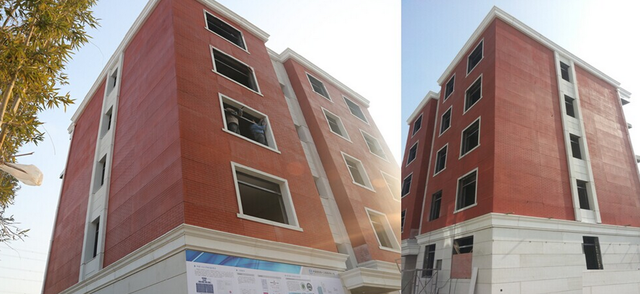8 Technology Trends in Housing and Urban Environment
DOM.RF commissioned to the HSE ISSEK Foresight Centre an analysis of more promising technological solutions for construction of housing; the results are presented in the publication 'The Future of Housing: Best Technological Development Practices'. The report outlines how housing construction, and urban environment generally are likely to develop (including in the scope of the 'smart city' concept).
Housing construction is increasingly turning towards technologies such as 3D printing, modular construction, digital modelling of buildings, robotics, and renewable energy. The 'fourth industrial revolution' technologies are being actively applied in urban development, such as the internet of things, big data analytics, blockchain, unmanned vehicles, and additive production.
3D Printing of Buildings
This technology allows to build houses literally in a couple of weeks’ time, saving between 50 and 70% of labour costs. In 2017 the Chinese WinSun company built a five-storey house — to date the highest building in the world with 3D-printed walls.

3D-printed 'Khrushchev housing' of the future. Source: WinSun website
BIM Technology (Building Intellectual Modelling)
Technologies for digitally designing high-rise buildings allow to use integrated modular models comprising a huge number of various documents and charts, which among other things helps accurately estimate project costs. The ultimate objective is producing a multi-layered scheme of the building reflecting all sorts of data, such as energy consumption, cost of materials, emissions into the environment during construction, etc. A good example of practical application of BIM technologies is the digital model of the 55-storey Marina Bay Sands hotel in Singapore with its curved shape, a swimming pool and a park on the roof.
Modular Construction
In 2015 a 57-storey high-rise was built in China in just 19 days, using the modular construction technology. Apart from greatly accelerating the construction process, this technology offers other valuable advantages such as low costs (20–40% less than conventional technologies), low environmental impact (construction waste is reduced from 5–10% to 1%), and energy efficiency (5 times higher than that of most other Chinese buildings).
Alternative Energy Systems
All over the world the municipal services sector is increasingly using alternative energy sources, among other things for heating purposes, such as sea water (heat pumps can provide up to 70% of heat the city needs), solar energy (solar panels provide more energy than the building consumes), waste (1 ton of waste is equivalent to 0.5 tons of oil or 0.25 tons of coal in terms of energy generation potential), etc.
Smart Cities
According to the United Nations Population Fund, the share of the world’s urban population will reach 70% by 2050. Wide application of information technologies is generally seen as the key answer to urbanisation-related challenges, in particular 'smart city' solutions which allow to make cities more comfortable, and use the available resources more efficiently. Good examples of smart cities include Amsterdam (one of the first smart cities in Europe), the international economic zone Songdo in South Korea (construction started in 2003 from scratch), a neighbourhood in the Canadian Toronto (a testing ground for new technologies), etc. Industry 4.0 technologies, along with the sharing economy and virtual consumption models are among key aspects of smart cities’ development.
New Consumption Models: Sharing vs Virtualisation
.png) |
| Singapore high-rises |
Sharing
Sharing, or shared use of goods and services, is becoming increasingly popular in a wide range of areas. This model is most often applied in transport (shared use of cars, bicycles, etc.). E.g. there are 6 thousand bicycles available for rent in Barcelona, and each is used 12–15 times a day. On the other hand in China bicycle sharing has turned into a real problem: due to excessive supply bicycle dumps are spontaneously emerging all over the place. According to a number of studies, new promising areas for application of the sharing model include energy resources, furniture, and clothes.
Virtualisation
Another consumption model is presented in a Singaporean mobility scenario. Many Singapore residents (and it’s one of the most overpopulated megacities in the world) by 2040 will work, study, shop, and socialise without leaving home, using augmented and virtual reality technologies. A logical consequence of virtual consumption will be emergence of 'smart jobs'.
Smart Jobs
By 2040 people will be increasingly less strongly tied to specific workplaces, carrying out their responsibilities in the scope of an integrated work environment such as, e.g., eco-campuses (a basic networking format with good transport access and convenient environment for joint operations); transport (working on the way to somewhere); home (working online, and using telepresence technologies). Smart jobs are expected to cut the average number of working hours from 1900 to 900–1200 a year, and working days from 5 to 4 a week.
Source: UN, OECD, European Commission, International Energy Agency, World Economic Forum etc.; analytical reports of various companies, research and analytical centres.
